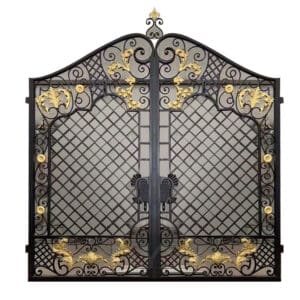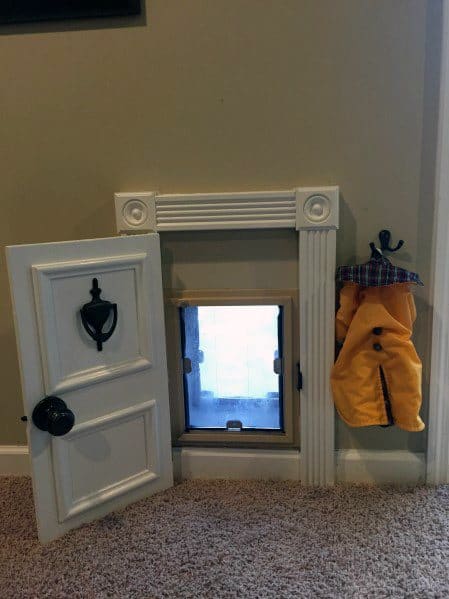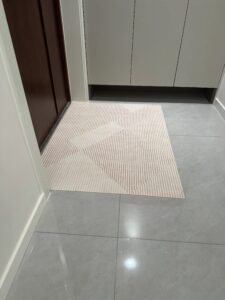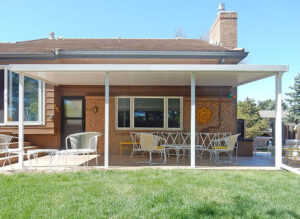
How to get custom aluminum doors?
How to get custom aluminum doors? Need sleek, durable entryways but overwhelmed by options? Custom aluminum doors range from $1,200-$8,000+ installed, with lead times of
As a dog owner, you realise the value of allowing your furry buddy to come and go as they choose in and out of your house. Installing a doggie door, which allows your canine partner to enter the yard or other sections of the home without relying on you to open the door for them, is one method to do this. While there are numerous doggy doors on the market, you may ask if it is feasible to design a bespoke doggie door to meet your exact requirements. In this blog post, we will look into the possibilities of constructing your own bespoke doggy door, as well as the pros and drawbacks of this do-it-yourself project.
A bespoke doggie door may bring various benefits to both you and your dog.
Consider the following advantages:
Perfect Fit: One of the primary benefits of designing a bespoke doggy door is that it can be adjusted to your dog’s unique size and form. A bespoke doggie door, as opposed to ordinary doggy doors, may be made to accommodate dogs of different types and sizes, assuring a perfect fit for your furry buddy.
Increased Convenience: With a personalised doggie door, your dog may come and go as they want, eliminating the need for you to continuously open and close the door for them. This is especially useful if you have a hectic schedule or your dog need regular access to the yard for toilet breaks or exercise.
Energy Efficiency: A well-designed bespoke doggy door can assist enhance your home’s energy efficiency. Allowing your dog to enter and exit without opening the main door reduces the loss of conditioned air, which may help lower your energy bills and decrease your carbon footprint.
Style Flexibility: Creating your own bespoke doggy door allows you to select the style and materials that best complement the beauty of your house. You may build a doggy door that blends in with the architecture of your home and matches the inside and outside décor.
Constructing a unique doggy Door: While constructing your own unique doggy door can be a gratifying DIY project, it’s vital to be aware of certain potential problems.
Consider the following challenges:
Making a personalised doggy door may need the use of particular skills and techniques, such as woodworking, carpentry, and cutting tools. Creating a personalised doggy door may be more difficult and time-consuming if you are unfamiliar with these abilities or do not have the essential materials.
Safety and Security: Keeping your house and pet safe and secure is a key responsibility. A poorly constructed or badly placed doggy door can offer safety issues, such as enabling burglars or wild animals into your property or causing your dog to become caught or harmed. To guarantee that your custom doggy door project fulfils safety and security regulations, it must be properly planned and executed.
restrictions of a Homeowner Association (HOA): If you live in a neighbourhood regulated by a Homeowner Association (HOA), there may be restrictions or standards governing the type and style of doggy doors permitted in your community. Before beginning your custom doggy door project, you must first study your HOA’s guidelines and secure any necessary approvals.
Cost and Time: While creating your own bespoke doggy door may appear to be a cost-effective option at first, it is critical to examine the entire cost and time commitment necessary for the project. Depending on the design, materials, and equipment required, the cost of making a bespoke doggy door can rapidly mount up. Furthermore, the time necessary to plan, measure, cut, and install a bespoke doggy door may be substantial, especially if you are new to DIY projects.

If you decide to go ahead and make your own unique doggy door, here are some instructions to help you get started:
Determine where you want the doggy door to be installed. It is critical to select a place that is both handy for your dog and complements the layout of your home. To estimate the size of the doggy door required, measure the height, breadth, and thickness of the door or wall.
Take into account the design and materials for your bespoke doggy door. Doggie doors are commonly made of wood, plastic, or metal. Select a material that is long-lasting, weather-resistant, and appropriate for the location of the doggy door. You may also choose a design that compliments the decor of your home, such as a basic flap-style door or a more complex framed door.
Gather the project’s tools and supplies based on the design you’ve chosen. A saw, drill, screws, hinges, weatherproofing supplies, and a pet door kit or template may be included. To minimise delays, make sure you have all of the necessary equipment and supplies before beginning the project.
Plan and measure the position of the doggy door on your door or wall carefully. If you are using a pet door kit or template, follow the manufacturer’s directions. Check your measurements again to confirm that the doggy door will fit properly and line with the height and size of your dog.
Cut the aperture for the doggy door according to your specifications using the proper equipment. Install the doggy door according to the manufacturer’s directions, including connecting the frame, flap, and weatherproofing materials. To avoid draughts, leaks, and other problems, make sure the doggy door is firmly fixed and tightly sealed.
Test the doggy door with your dog after installation to check that it works correctly and that your pet can easily utilise it. To guarantee a comfortable fit for your dog, make any required alterations, such as cutting the flap or altering the height.
After the doggy door is correctly fitted and functioning, you may add finishing touches like painting or staining the frame to match the decor of your home. This step is optional, but it can improve the overall look of your unique doggy door.

Despite the possible difficulties and safety concerns, there are some advantages to making your own personalised doggy door:
Your Pet’s Convenience: A unique doggy door gives your pet easy access to the outdoors, enabling them to come and go as they want. This is especially useful for dogs who need to go pee regularly or prefer spending time outside.
Improved Pet Independence: A doggy door may help your pet’s independence by enabling them to go outdoors and explore on their own, rather of relying on you to let them in or out all the time.
Access to the outdoors may give your pet with chances for exercise, mental stimulation, and fresh air, all of which can benefit their general health and well-being.
Energy Efficiency: A properly sealed bespoke doggy door may help preserve your home’s energy efficiency by reducing draughts and minimising heating and cooling losses, potentially resulting in energy savings and lower utility costs.
Flexibility: With a bespoke doggie door, you can select the design, size, and placement that best matches your house and your pet’s demands, resulting in a personalised solution that fits your lifestyle.
Aesthetics: By designing your own custom doggy door, you may select a style and material that compliments the aesthetics of your home, boosting its overall appeal.

Making your own bespoke doggy door may be a gratifying DIY project that gives convenience for your pet while also increasing their independence. However, careful design, measuring, and installation are required to assure safety and functionality.
Before beginning this job, examine the potential problems, safety concerns, and maintenance requirements. If you are unsure about your DIY abilities, it may be preferable to get expert assistance to guarantee a good installation. A unique doggie door may provide benefits such as convenience for your pet, greater pet independence, health and exercise benefits, energy efficiency, flexibility, and beauty with correct planning, materials, and installation. When designing a bespoke doggy door, always keep

How to get custom aluminum doors? Need sleek, durable entryways but overwhelmed by options? Custom aluminum doors range from $1,200-$8,000+ installed, with lead times of

How to make custom door mats? Want personalized home entryways without $75+ retail markups? Crafting custom doormats costs just $15-$35 using accessible outdoor-grade materials like

How much do custom window screens cost? Frustrated by insects ruining your fresh air enjoyment? Custom window screens typically cost $50-$300 per unit installed –

What is the best type of wall covering? Tired of staring at dull walls but overwhelmed by options? The “best” wall covering depends entirely on

How to import better doors and windows from China? Want high-quality building products at 30-50% below local prices? Importing from China can save you thousands

Is it cheaper to build a pergola or buy one? Struggling to decide between DIY construction and pre-built pergolas? Building your own typically costs 40-60%